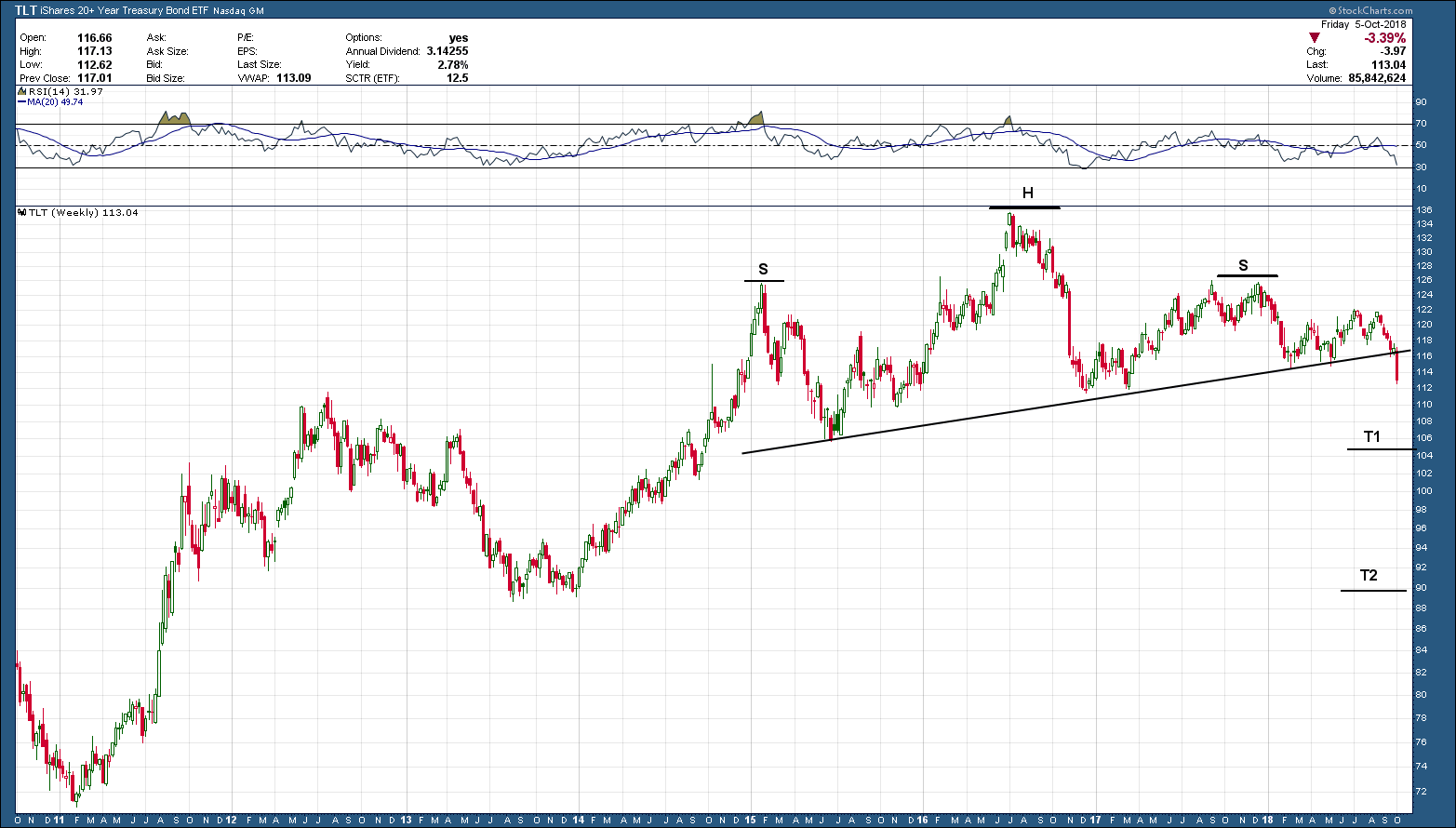While the dollar has been acting as a governor for the price of most commodities, there are a few exceptions which are doing quite well thank you …. most notably, oil. Another that has caught my eye is Uranium. Since it has limited uses, highly regulated but reasonably low demand (unless you are North Korea) at 70-80 metric tons per year, it should come as no surprise the market is very thin and can fly under the radar of most investors.
One of the largest publicly traded Uranium companies is Cameco, CCJ. Based in Saskatoon Canada, CCJ is licensed to produce up to 26 tons annually. Unfortunately, the market for Uranium from 2014 through 2017 was a tough one as the price of CCJ fell almost 70% during that period. Since 2014 though, as you can see in the chart below, the character of the stock has changed, setting up for a potential directional change. It has gone from one in a downtrend to one that has made a higher high and higher low from its oversold low. Notice also, the inverse head and shoulders bottoming pattern whose neckline is now being tested from underneath. An argument for the validity of a new trend change can be seen in the amount of shares being traded (bottom volume pane), as it has been more than 2x the average while forming the right shoulder of the large, almost two-year pattern.
A break and hold above the neckline points to a target at ~$18 above, a 50% potential gain. 50% gain opportunities don’t come along too often and when they do they should pique an investors attention. This one has mine. For those who find this setup compelling, keep in addition to the normal single stock risk this one comes with additional baggage. When you combine that with the fact nuclear power and weapons can, for many investors can elicit a “third rail” type of reaction and it is on the cusp of not meeting liquidity requirements, Financial Perspectives clients are unlikely to find this in their portfolios regardless of the upside potential any time soon. But those investors who invest only to make money and without regard to morals or personal beliefs, this is one for your consideration.





